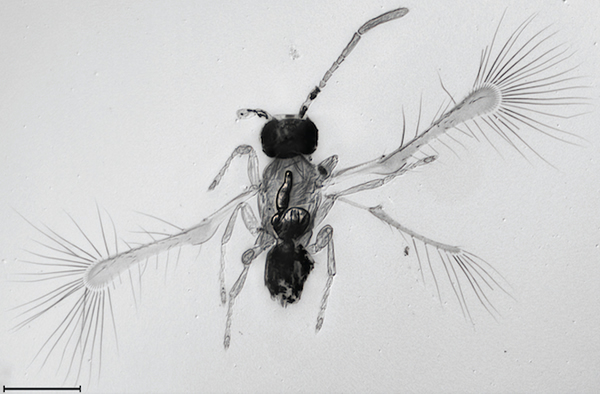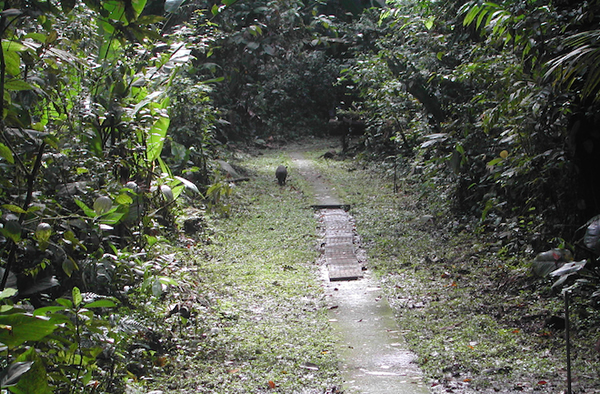Tinkerbell the Fairyfly Is Invisible to Humans
The children’s story “Peter Pan” famously ends with kids shouting, “I do believe in fairies!” and now they, and adults, can truly believe in Tinkerbell the fairyfly, just discovered by scientists.
The fairyfly, Tinkerbella nanna, without magnification is invisible to us and lives in a bucolic forest setting. This, along with its delicate wings topped by long fringes, inspired the name, according to a study published in the latest issue of the Journal of Hymenoptera Research.
Tinkerbell the Fairyfly Is Invisible to Humans
Tinkerbella’s Home
Mymaridae, commonly known as fairyflies, are a type of tiny wasp found worldwide, save for Antarctica. The family includes the smallest known insect, Kikiki huna, which measures just .005 inches long.
As you might imagine, these insects, including newly discovered Tinkerbella, are hardly ever noticed by humans. One could be buzzing by you right this very minute, and you wouldn’t have a clue. (This reminds me that 3.3 pounds of bacteria, representing some 500 species of bacteria, live in the human gut. Small organisms are everywhere!)
Tinkerbella thankfully does not bother humans, although it is a parasite on the eggs of other insects. Researchers found it after conducting a meticulous search of species in a forest located at Alajuela, Costa Rica. Magnification was needed to identify the mysterious Tinkerbella.
Another very fairy-like feature of this insect is that its tiny, fringed wings flap at several hundred beats per second.
Regarding Tinkerbella‘s minute size, and the quest to find other small species, lead author John Huber from Natural Resources Canada wrote, “If something is physically possible in living things, some individuals of at least one species, extinct or extant, will likely have achieved it. So the lower size limit, by whatever measure of size is chosen, was almost certainly already evolved—somewhere, sometime. If we have not already found them, we must surely be close to discovering the smallest insects and other arthropods.”
Time will tell if he’s right. We might also have to develop even more powerful magnification tools to see if we’re really identifying all of the tiny insects and related organisms that exist in the world.(Apr 24, 2013 09:00 AM ET // by Jennifer Viegas)













